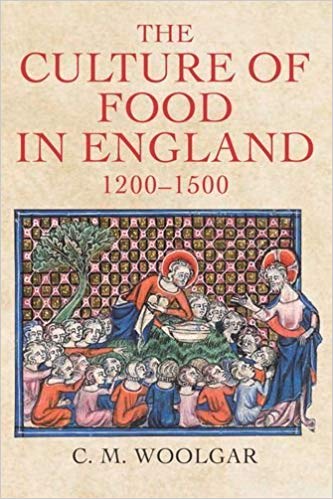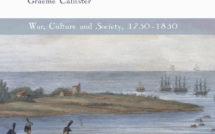
This is a part of our special feature on Food, Food Systems and Agriculture

The history of food, both from the production and consumption side, has been arguably one of the most popular scholarly topics in social and economic history. It is only in recently, however, that historians have started to give more consideration to various “cultural” aspects of food history. One may think of Christina Normore’s A Feast for the Eyes (2015), David Gentilcore’s Food and Health in Early Modern Europe (2016), or Paul Freedman’s Ten Restaurants That Changed America (2016) as some recent notable examples. Chris Woolgar’s The Culture of Food in England, 1200-1500 is yet another welcome addition to this growing corpus of exciting literature. This book is, in effect, an innovative tour de force by a scholar, whose knowledge and understanding of food history in late-medieval England is unrivalled.
A small caveat, to begin with: those economic historians obsessed with numbers and stats may easily get frustrated that the book is furbished neither with tables on grain production by peasants, nor with graphs on meat consumption by aristocratic households. In other words, this book diverts from a long-established tradition of food history that has been “appropriated” by social and economic historians. It is, instead, an engaging histoire des mentalités, focusing on the material aspect of late-medieval food. Graphs, charts, and stats are replaced with proverbs, hagiographic stories, sermon anecdotes, and literary sources, supplemented with archaeological, material and iconographic evidence, wills and diet accounts, many of which were unearthed from various archives and brought to light and analyzed for the first time.
Woolgar tells his narrative in an engaging manner. Each chapter and section is full of vivid examples, taken from various sources. Thus, in Chapter 2 “Cooking in the Countryside,” based primarily on coroners’ rolls, we learn about an unfortunate two-year child, who fell into a vessel full of ale at Baumber in Lincolnshire in 1354; about cooking habits of a Norfolk countrywoman accused of heresy in 1429; about a Lincolnshire man, who drowned in a creek in his failed attempts to recover an earthenware pot, in 1377. Likewise, Chapter 7, entitled “Civic Food Culture and the Guilds,” is centered around the culture of feast of the guild of the Holy Cross, Stratford-upon-Avon in the fifteenth century. Woolgar depicts the Stratford feast events with a remarkable detail, as if he was present there himself. Apart from “ordinary” kinds of food, the Stratford guild spent considerable amounts on “exotic” types of food, consisting mainly of expensive spices. Spices were, first and foremost, a symbol of prestige, and their acquisition and consumption reflected not only the conspicuous will of the Holy Cross guild to boost up its status, but also to exalt the honour of their town. In Chapter 9 “The Elite Table,” Woolgar takes us to dining conventions and traditions of high aristocracy. Here, Woolgar marries iconographic evidence with household accounts. The “elite table” tradition was both hierarchical and conspicuous, where lavish tableware played a special place. This is reflected in a long series of luxurious tools used during the dinner services of Queen Philippa in 1331-2 and dining goods left by Queen Dowager Isabella, upon her death in 1358.
Other chapters are as engaging. In Chapter 1, “Food Cultures,” Woolgar introduces the reader into the topic of food cultures of late-medieval England, through the prism of theological and cultural associations with food; characteristics of medieval food; meal structure; spaces for food consumption, as well as the connections between gender, age and food. Chapters 3 through 6 are dealing with different groups of foodstuffs: drinks (Chapter 3); bread, meat and dairy food (Chapter 4); sauces, spices, sugars and preserves (Chapter 5); garden produce, wild foods, fish and game (Chapter 6). One overarching theme of these chapters is the connection between social groups and food consumption. Ales were drank by all social groups; cider had a regional character; while wine was commonly associated with liturgical use and consumed by higher social echelons, who could afford it. Bread, meat, and dairy food were consumed by all strata, but the contribution of each component varied greatly across social groups. Spices, sugar and preserves were reserved for wealthier consumers, but cheaper spices (mustard and pepper) could be consumed by peasants, in their conscious attempt to emulate eating habits of their lords. Vegetables, fruit and fish were produced, harvested and consumed by both peasants and lords, while game-meat was considered an expensive and lavish food, reserved for higher social echelons. One thing in common between garden produce, fish and game was their commercial character. Chapter 11 is entitled “Hunger and Famine” and it is with this chapter that one may take the only issue in the book. While this chapter covers well the aspect of “hunger,” in conjunction with food alms distribution (both individual and institutional) among beggars, it deals neither with famine nor famine relief. Although there is a reference to food distribution by Canterbury Cathedral in 1315 and in the will of William Derby, archdeacon of Bedford in 1438 (both famine years), but the author did not situate the two cases in the context of famine. The concluding chapter “Food and Popular Mentalities” provides a synthetic overview of the topic, but also considers the changes in attitudes to food consumption across the entire period between c.1200 and c.1500. Here, Woolgar concurs with the prevailing wisdom that the Black Death was a pivotal event in the history of food consumption. The drastic population decline altered the land-to-labour ratio and, consequently, increased the living standards of commoners. In these new circumstances, lower echelons could afford shifting from lower-quality to better-quality foods, from more simple to more sophisticated culinary equipment.
Covering three centuries of history is by no means an easy and straightforward task, often presenting scholars with a challenge of generalisation and over-simplification. Woolgar overcame all these challenges with remarkable ease. He carefully distinguishes between social groups, geographic regions and periods. Lay aristocracy, monks, commoners, beggars are all represented in this book. The author is aware that the “Late Middle Ages” were a dynamic period with various socio-economic and cultural shifts and changes, reflected in the interaction between people and their food. Woolgar’s training as an archivist is apparent in his control of primary sources, unearthed and brought to light from various archival repositories.
Perhaps the biggest merit in Woolgar’s book is in the fact that his scholarly approach liberates the history of food consumption from the tyranny of statistical analysis and, thus, makes it accessible to students of social and cultural historians of late-medieval (and indeed, pre-Industrial) Europe. In this regard, Woolgar followed the path paved by Christopher Dyer in his classic Standards of Living in the Later Middle Ages (1989) and a series of ensuing articles. This is, by no means, to demean the importance of quantitative approach to the study of late-medieval food production and consumption. On the contrary: Woolgar’s study clarifies what went on in the minds of those harvesters and consumers, whose statistical accounts have been subjugated to rigorous quantitative analysis by several social and economic historians. Quantitative cannot be fully understood and appreciated without qualitative; and the other way around. In this sense, Woolgar fills a visible and notorious historiographic gap and makes an invaluable contribution to the historiography of food consumption in particular, and social and cultural history of late-medieval England in general. I anticipate this book to make it to various college- and university-level syllabi, and to be cited by various scholars of social, economic and cultural history of late-medieval Europe, for years to come.
Reviewed by Philip Slavin, University of Kent
The Culture of Food in England, 1200–1500
By C. M. Woolgar,
Publisher: Yale University Press
Hardcover / 341 pages / 2016
ISBN: 9780300181913
To read more book reviews click here.
Published on September 5, 2018.




